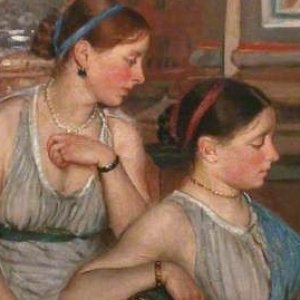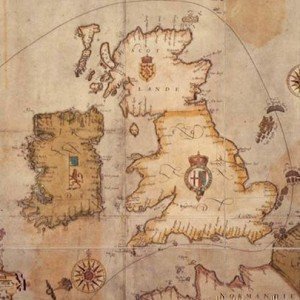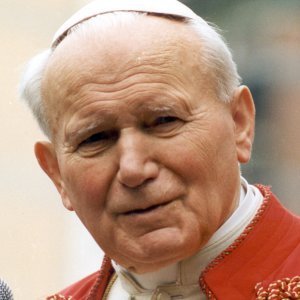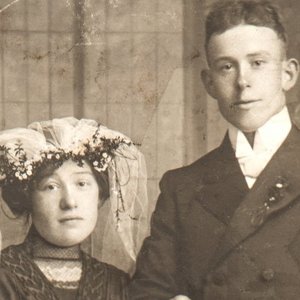Pirates did roam the Gulf Coast, but more myths than facts have inspired the regional folklore.
/https://public-media.si-cdn.com/filer/ef/f5/eff59a9a-fc70-482c-8a7a-d47cf03177f7/b29-unk-00000018-a3079498-b30a-4f03-99c0-4633f3b3cf17.jpg)
–
Most years, as January draws to a close, pirates invade Tampa. Hundreds of boats swarm the city harbor, led by a 165-foot-long, fully rigged pirate ship. A crew of swaggering, swashbuckling bandits in eye-patches and tricorns accost the mayor and demand the keys to the city.
It’s an act, of course: Many of the people initiating the action, dressed like characters straight out of Pirates of the Caribbean, are members of the Florida city’s elite. They belong to Ye Mystic Krewe of Gasparilla, a once-segregated quasi-fraternity that dates to 1904 and puts on the Gasparilla festival each year, with help from sponsors like Bud Light and Captain Morgan rum. The Krewe estimates that nearly 300,000 people, locals and tourists alike, parade and party along Tampa’s streets each year to celebrate José Gaspar—a.k.a. José Gasparilla, the legendary pirate who supposedly terrorized his way up and down the west Floridian coast in the late 18th century.
Many of this year’s Gasparilla festivities were postponed due to the Covid-19 pandemic. But Tampa residents still have reason to celebrate: On February 7, their NFL team, the Tampa Bay Buccaneers, will go up against the Kansas City Chiefs in Tampa’s Raymond James Stadium for the 55th annual Super Bowl. Usually held at a pre-determined neutral site, this year marks the first time that one of the teams will play for the title on its home turf.
For generations, the allure of the buccaneer and José Gaspar’s legend have inspired a broad range of namesakes in Tampa, from the football team to a music festival, an independent film festival and a half marathon. But like most legends, this one mixes a sprinkling of fact with a hefty dose of fiction. Here’s what we know—and don’t—about the history of the Gasparilla phenomenon.

–
Who were the real buccaneers?
For centuries, pirates posed a real threat along Florida’s coasts. Scattered records indicate that Diego “El Mulato” Martín, a pirate of African-Spanish descent who hailed from Cuba, may have plundered Caribbean islands and the Gulf Coast in the 1600s, and English buccaneer Robert Seales launched a famous raid on St. Augustine, a settlement on Florida’s Atlantic coast, in 1668.
Scholars typically use the term “buccaneer” to refer to pirates who operated in the Caribbean and the Gulf of México during the so-called Golden Age of Piracy, roughly 1650 to 1726, says Jamie Goodall. A staff historian at the U.S. Army Center of Military History, Goodall studies pirates of the Caribbean and Atlantic worlds with a focus on their economic lives.
Life as a buccaneer was very difficult, she notes. Crews often made their living by attacking cargo ships, which meant that to turn any sort of profit, the buccaneers would have to travel to a nearby island and fence their loot for cash—a drawn-out, difficult process with no guarantee of reward. Exhausted by lack of food, disease and the otherwise grueling pace of survival on a ship, buccaneers often served just one or two “ventures” before retiring.
And despite their reputation as total outlaws, buccaneers often operated as “an extension of colonial authority,” Goodall notes. As the English crown found itself overtaxed with maintaining control of its many colonies, privateers would patrol the seas on behalf of the colonial state in exchange for money. Even the term “buccaneer” is a vestige of colonialism: the term comes from the Arawak word boucan, a wooden framework that Indigenous Caribbean populations like the Taínos and Caribs would use to suspend and smoke meats over an open fire and dry them. French colonists adopted the term as boucanier, referring to the landless hunters who survived off game in Hispañola and Tortuga and attacked Spanish ships, and English colonists later Anglicized the word to describe the pirates aiding and attacking trade ships around the colonies.
Buccaneers were also complicit in the exploitation and enslavement of local Indigenous populations and people of African descent, Goodall says. During the earliest period of European colonialism in Florida, Indigenous groups such as the Tocabaga, the Mocoço, the Pohoy, and the Uçita—to name just a few communities that lived in the immediate Tampa region—were ravaged by Spanish pirates who came up from Cuba, for instance.
Goodall takes exception to the notion, popularized by some historians, of pirates as democratic outlaws who provided a sort of equal-opportunity lifestyle for women and oppressed racial groups on the high seas. While the historical record shows that some freed, formerly enslaved Africans and Indigenous people worked on buccaneer ships, the pirates also benefited from and engaged in the trade in enslaved people.
“Pirates were operating within this sort of mercantilist … system, in which they’re more than willing to participate in the transatlantic slave trade and the brutal enslavement of Africans and indigenous populations,” says Goodall. “So, these people might have existed as pirates on those ships, but they weren’t necessarily free.”
How did the myth of Gasparilla begin?
Bad news for Tampa: No reliable evidence suggests that José Gaspar ever existed, says Brad Massey, curator of public history at the Tampa Bay History Center. The earliest mention of Gaspar, according to Massey, comes from a local man named Juan Gómez, who lived about 200 miles southeast of Tampa near Florida’s Ten Thousand Islands region around the early 1900s.
Gómez, who described himself as more than 100 years old, gained local fame by claiming to be a former cabin boy of Gaspar’s, Massey says. Gómez placed Gaspar’s story during the second period of Spanish colonial rule, a turbulent time that immediately predates U.S. incorporation of the region in 1821.
Gómez’s story was repeated around the region, taking on familiar dimensions while the details varied depending on who was telling it: José Gaspar was born into a Spanish aristocratic family and sailed to the Caribbean with hopes of making it in his country’s navy. When those dreams dissolved, he turned to piracy, mercilessly plundering merchant ships around the coast of Florida on his ship named Gasparilla. The story goes that Gaspar amassed treasure, took women captive on Captiva Island, and became the namesake of Gasparilla Island, a barrier island south of Tampa Bay. (In reality, historians believe the island might have gotten its name from a Spanish priest that worked on the island, per the Tampa Bay Times.)
In Gómez’s telling, Gaspar met his unfortunate end when he was sabotaged by the USS Enterprise, an American ship tasked with shutting down piracy in the Bay. Rather than surrender, Gaspar supposedly wrapped his ship’s anchor around his waist and plunged into the ocean.

–
A marketing scheme takes hold
In 1904, the society editor of a Tampa newspaper, Louise Frances Dodge, caught wind of the popular José Gaspar myth and decided to capitalize. With the goal to turn Tampa into a tourist destination, Dodge teamed up with federal bureaucrat George W. Hardee to plan a parade of pirates and a choreographed “invasion” that would accompany the city’s May Day Parade. Inspired by the success of Mardi Gras in New Orleans, the duo wanted this festival to put the Florida city on the map.
Thus, Ye Mystic Krewe of Gasparilla was born. The Krewe, which functioned much like a society club for Tampa’s white, moneyed elite, launched its first “invasion” on horseback on May 4, 1904. By 1911, people began to invade Tampa via sea in true pirate fashion, and the Krewe bought its first dedicated boat for the occasion in 1936.
“One of the ironies is that the [Krewe is composed of] … the most powerful people in the city,” Massey says. With much fanfare, the group stages an altercation each year where they demand that the mayor hand over the keys to the city. “But a lot of times throughout Tampa’s history, the mayor is part of the Krewe as well. So, in a way, it’s an inside job,” Massey adds.
Tampa at the turn of the century was racially diverse but also starkly segregated, with a white economic elite and a working-class community of immigrants from Latin American countries, especially Cuba, African Americans and some European immigrants. For decades, the Krewe’s members were entirely white men, just part of the group’s well-documented history of racism and exclusion.
Nevertheless, the Gasparilla legend flourished. For residents of the city at the turn of the century, Gaspar’s legend offered “a way to romanticize what is really an industrial city,” Massey says. Tampa’s economy in the 1900s ran on the cigar production in the city’s primarily Latino Ybor City district, and discovery of phosphate in the late 1800s created a booming mining industry.
At its best, the legend of José Gaspar provided a divided city with “a common mythology,” Goodall says. “This festival was a way to sort of bridge the gap” between different classes and races, she adds.
“It’s very difficult to market industrial cities, especially in 1904 when the first Gasparilla parade takes shape,” adds Massey. “It was a way for people to look at their city and say, ‘What’s unique about this place? What fun yarn can we spin to make this attractive?’”
The harsh realities of industry also might have made the romantic notion of a lawless pirate more attractive, says Goodall: “For a lot of people, romanticizing the pirates and their bucking of traditional authority was a way to rebel against this industrial, capitalistic system.”
In the 1990s, after decades of protest from civil rights leaders in the Tampa community, mayor Sandra Freedman and the N.F.L. team put pressure on Ye Mystic Krewe to desegregate. The all-white Krewe was so resistant to the idea that it canceled the parade in 1991, rather than allowing African American Floridians to join the group.
The Krewe finally agreed to admit African American members later that year. Although other Gasparilla-themed Krewes have sprung up for women and other marginalized groups in the last century, the original Ye Mystic Krewe remains male-only to this day.

–
The football team buys into the legend
In 1975, as the city of Tampa prepared to welcome its new N.F.L. franchise to the city, the city held a name-picking contest. Buccaneers, a submission with a nod to the long history of the Gasparilla parade, won out.
Lamar Sparkman, the long-running cartoonist for the Tampa Tribune, mocked up a French-style, debonair pirate: Bucco Bruce, a musketeer figure who clasps a knife in between his teeth and winks cheekily. Yet despite its flashy mascot, the team flailed spectacularly in its early years. The Buccaneers went 0-14 in their initial season, prompting sports commentator Nick Bakay to quip that Bucco Bruce was a pirate who “struck fear in the hearts of no one.”
The Buccaneers finally ditched the Creamsicle-orange uniforms in 1997 and opted for a tamer, pewter and dark-red color scheme. In the years post-rebrand, the team played much better, even winning a Super Bowl in 2002. This Super Bowl Sunday, thousands of fans will don pirate-themed gear in hopes that their team will snag a second championship.
The century-long lifespan of the Gasparilla legend shows how “you can take something that’s kind of partially rooted in historic fact, and then rooted in mythology, and you can really use it to build identity for a city like Tampa,” Massey says.
And even though historians agree that José Gaspar almost certainly—surely—never existed, rumors still circulate. In 2015, a pair of Tampa siblings found a dried-out, severed hand in an attic that they swore must have belonged to Gaspar himself. (Some maintain that Gaspar cut off his hand as he fled his sinking ship.)
“Experts believe [that hand] was definitely a hoax. But it’s all part of the fun, right?” Massey says with a laugh. This legend has a powerful grip.
–
–
–















